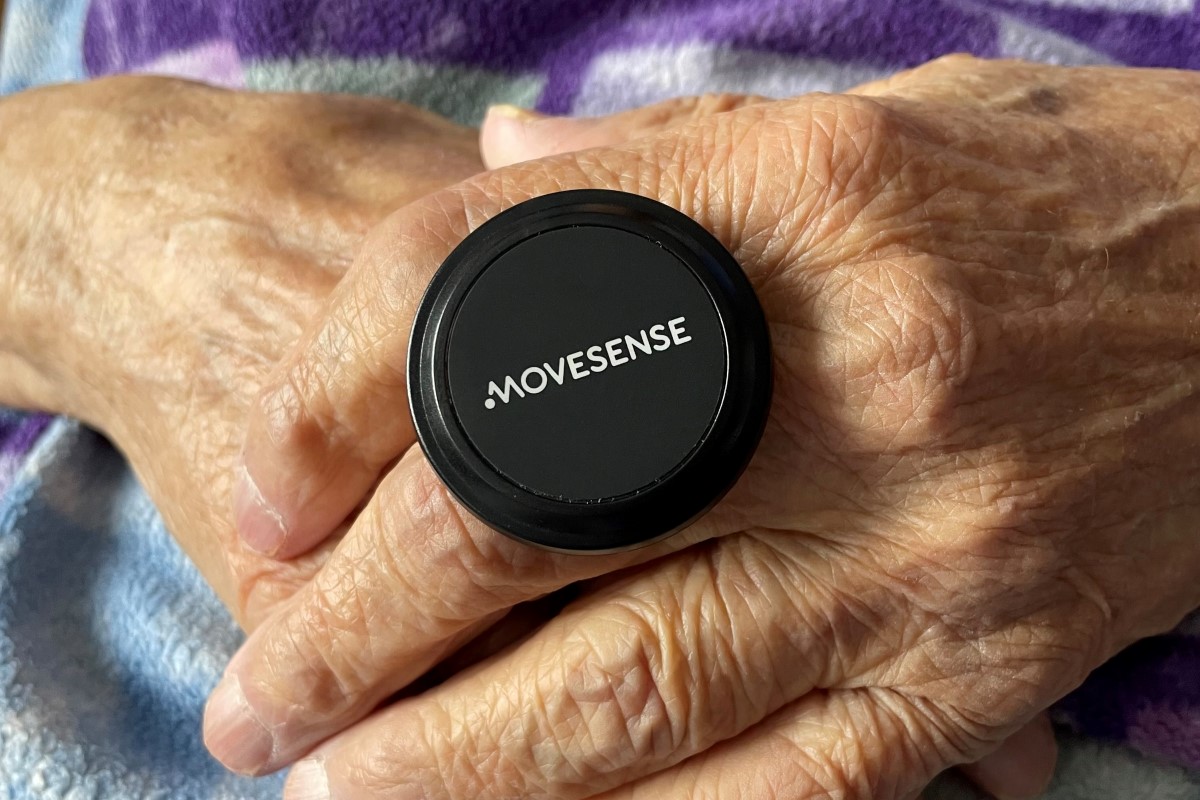Supporting the Independent Living of the Elderly with a Wearable Sensor

At some point in old age, most of us face the question of whether I will still be able to live independently in my own home. The desire to remain in the comfort of one’s own home doesn’t diminish with age; if anything, it becomes even more pronounced. At the same time, the well-being of elderly individuals can be a major concern for their relatives.
With the aging population, most western welfare societies must deal with the same question from another perspective: as caring for senior citizens in their homes is more cost-effective compared to assisted living facilities or hospitals, how to support independent living at home for as long as possible? We believe that Movesense sensors can bring at least a little relief.
Independent living habits and daily activity
One of the most pressing issues faced by elderly people living at home is malnutrition. Whether due to a lack of food, inability to cook, or simply forgetting to eat, this problem poses significant risks to their health. By using Movesense sensors, we can gain valuable insights into their food consumption patterns.
These sensors can be affixed to fridge doors and cabinets, allowing relatives to monitor whether these cabinets are accessed regularly throughout the day. While it may not guarantee that food is consumed, it provides a glimpse into their habits. A similar approach can be employed to keep track of medication intake.
A simple way to assess one’s ability for independent living is activity monitoring. The unobtrusive Movesense sensor suits very well for this purpose, and can again provide real time information about a person’s activity intensity and other activity measures such as steps, active time, and standing ups.
Monitoring Balance and Falls
Reduced mobility and balance are other concerns as individuals age. Inactivity and balance issues can contribute to falls, which are challenging to measure accurately. Falls can be categorized into four types: falls during sleep, falls while sitting, falls during walking or standing on the floor, and falls from standing on supports such as ladders. Among these, the first three categories are the most common for elderly people.
Movesense customer Ainone has already created a scientifically validated, medical application for balance assessment. The solution is used also in elderly care.
In Movesense sensor fall detection can be based on the posture or motion of the device. Sensors are affordable, easy to set up and operate, making them well-suited for fall detection.[1] In case of a fall, the application can promptly notify relatives or home care providers for immediate assistance. Movesense sensors have also been successfully used for fall risk assessment[2] that helps prevent falls before they even need to be detected.
Identifying Arrhythmias with Continuous, Wearable ECG
The Movesense sensor is also designed to measure ECG at a medical level. Its ease of use makes it accessible to senior citizens. Unlike traditional Holter measurements that may restrict normal living, the chest strap ECG sensor seamlessly integrates into daily life. Research shows that users prefer Movesense chest strap ECG over a lightweight Holter monitor.[3] With disposable patch electrodes, the sensor is even more unobtrusive to wear.
This convenience allows users to record and share their ECG readings with doctors, which can be invaluable in identifying arrhythmias. Atrial fibrillation (AF) is the predominant abnormal heart rhythm found in older adults, and its occurrence becomes more frequent as individuals age. It increases the risk of ischemic stroke and mortality.[4] The sensor’s capability to send timely notifications in the event of arrhythmias further enhances its significance in promoting heart health and well-being. The sooner help is available, the better.
If you have any ideas on contributing to making the world a better place with wearable movement and ECG sensors, please don’t hesitate to contact us. Let’s discuss the exciting possibilities that our device and technology can offer. Together, we can empower elderly individuals and improve their overall quality of life.
[1] Yu, X. Approaches and principles of fall detection for elderly and patient. In HealthCom 2008-10th International Conference on e-health Networking, Applications and Services (pp. 42-47). 2008. IEEE. DOI: 10.1109/HEALTH.2008.4600107.
[2] Similä, H. et al., Mobile Fall Risk Assessment Solution for Daily-Life Settings, 40th Annual International Conference of the IEEE Engineering in Medicine and Biology Society (EMBC), 2018, pp. 1530-1533, doi: 10.1109/EMBC.2018.8512589.
[3] Santala, OE et al., Automatic Mobile Health Arrhythmia Monitoring for the Detection of Atrial Fibrillation: Prospective Feasibility, Accuracy, and User Experience Study, JMIR Mhealth Uhealth 2021;9(10):e29933, DOI: 10.2196/29933.
[4] Oqab, Z., et al., What is the impact of frailty on prescription of anticoagulation in elderly patients with atrial fibrillation? A systematic review and meta-analysis. Journal of atrial fibrillation, 10(6). 2018. DOI: 10.4022/jafib.1870.
Views: 314
